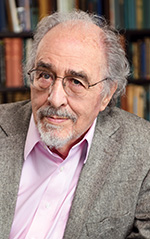Raising Children in East Berlin
Reflections
BY OTHO ESKIN
In 1977, accompanied by my wife and four children, I was assigned to the U.S. embassy in East Berlin, the capital of what was then the German Democratic Republic.
Our house was on a street that extended from East to West Berlin. In August 1961, the East German regime began construction of a wall to divide the city. A neighbor told me that on the night construction began, she walked the few blocks from her home to observe what was happening.
She considered making a run for it but lost her nerve. Consequently, she was stuck in the East for the next three decades. In between the two 14-foot-high walls, guarded by watchtowers, lay the Death Strip. Over the years, some 140 people were killed trying to escape.
My children were aware of such atrocities and the fact that, though we lived alongside East Germans, we and they were worlds apart. That wall symbolized a chasm that not even innocent youth could breach.
“I was very conscious of our privileged position, being diplomats and U.S. dependents on top of that,” my daughter Neal remembers. Beyond having the freedom to travel to and from the West, Americans had other reminders of their status. “The trash was collected by a different service. I was a little weirded out by that.”
As a teenager, Neal had many uncomfortable conversations with her East Berlin peers. At the time, she presumed it was because her German was poor. She now realizes they may have deemed it dangerous to speak to her, an American.
Her sister, Katherine, who was 10 when we arrived, has similar memories. “I knew it was truly something to move freely on both sides of the Wall,” she says, adding that while East Berliners lived in constant fear, her family was hosting dinner parties.
These get-togethers excited her, both because she received gifts and because she knew that the attendees shared freedom. “I felt like something important was transpiring during those occasions, and somehow I was part of it.”
While Katherine knew that our phones were tapped and that certain neighbors had been recruited as informants, she never really worried about the surveillance. “Mostly I felt sorry for the poor souls who had to listen to tween-me prattle on with my girlfriends on the phone.”
The only routes between East and West Berlin were a strictly controlled subway and a limited number of checkpoints manned by heavily armed guards. My kids attended school in West Berlin, so they traveled daily through these checkpoints, including the famous Checkpoint Charlie.
The younger ones went by a bus operated by the U.S. embassy. Whenever the bus crossed into the West, East German security guards boarded to see that no East Germans were onboard. Sometimes the bus driver failed to appear at the end of the school day to transport the kids back East. The kids assumed he had defected to the West.
My older kids traveled back and forth using either Checkpoint Charlie or the Friedrichstrasse train station, where they could catch the U-Bahn or S-Bahn systems. Because East Germans were forbidden to ride the trains unless they had special privileges, the Friedrichstrasse station became a bordercrossing checkpoint. My kids could ride either train, and when on the U-Bahn, they passed many deserted platforms where the trains never stopped. These were known as ghost stations.
Katherine recalls being stranded in the West, though it was often because she’d missed the shuttle bus. “I remember spying for diplomat car plates in the parking lot,” she recounts. “I’d linger to see if I could bum a ride back to East Berlin. I trusted people associated with the diplomatic corps. It felt like we were part of a community.”
People sometimes ask if my children suffered trauma living in East Berlin. I reply that they took the situation in stride, for the most part having the same preoccupations as their stateside peers: schoolwork and friends.
In fact, they benefited from the experience, learning what freedom really means.
When sharing or linking to FSJ articles online, which we welcome and encourage, please be sure to cite the magazine (The Foreign Service Journal) and the month and year of publication. Please check the permissions page for further details.


